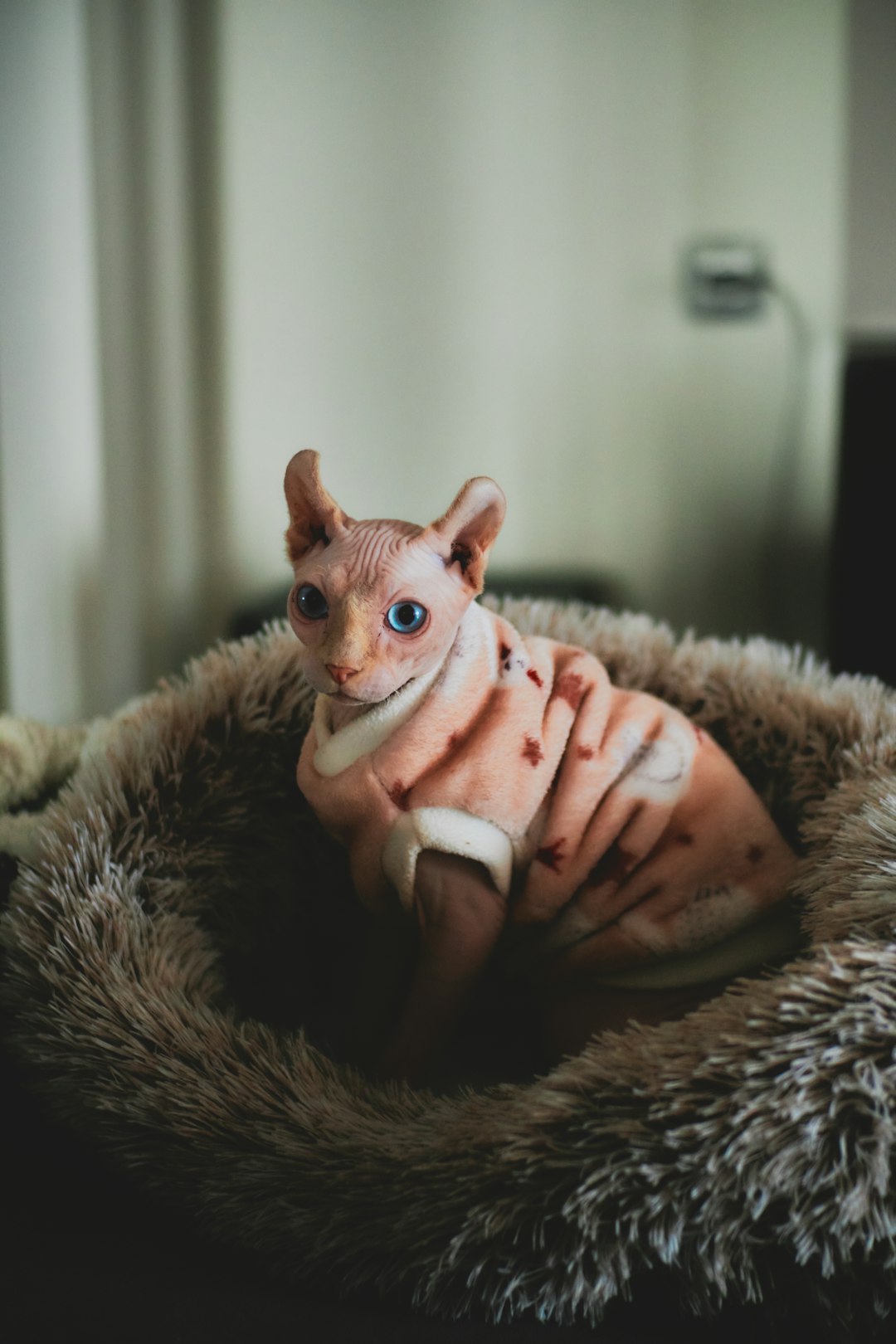Spaying your cat is an important decision that not only impacts their health but also helps control the pet population. Understanding the cost to spay a cat involves considering various factors, including the procedure’s complexity, geographical location, and additional services like vaccinations. Typically, spaying can vary widely in price depending on these elements. Moreover, seeking financial assistance or low-cost clinics can ease the burden. This guide will explore the factors influencing spaying costs, average price ranges, and even potential long-term savings for pet owners, ensuring you make an informed choice for your furry friend.
Factors Influencing the Cost to Spay a Cat
When considering the cost to spay a cat, several factors come into play. Understanding these elements can help you prepare for the expenses involved. Here are the key factors that influence pricing:
Age and Weight: Kittens are generally less expensive to spay than adult cats. Additionally, heavier cats may require more resources for surgery, increasing costs.
Health Condition: If your cat has underlying health issues, extra tests or pre-surgical care may add to the overall cost.
Type of Veterinary Clinic: Spaying at a high-end veterinary clinic often costs more compared to a low-cost clinic or animal shelter.
Surgical Techniques: Traditional spaying is usually cheaper than laparoscopic methods, which, while less invasive, require specialized equipment and training.
Geographical Location: Costs vary widely between urban and rural areas. Major cities often see higher prices due to increased demand.
By considering these factors, you can better understand the cost to spay a cat and find a suitable option that fits your budget.

Average Cost Range for Spaying Procedures
Understanding the cost to spay a cat is essential for any pet owner. Generally, the average cost can vary significantly based on several factors. Here’s a breakdown:
- Standard Clinics: Typically, the cost to spay a cat ranges from $50 to $150.
- Emergency Clinics: Here, prices can soar to $150 to $300 due to after-hours services.
- Animal Shelters: Many offer spaying at reduced rates, often between $30 to $75.
| Clinic Type | Average Cost ($) | Services Included |
|---|---|---|
| Standard Veterinary | $50 – $150 | Pre-operative exam, anesthesia, post-care |
| Emergency Clinic | $150 – $300 | On-site monitoring, emergency care |
| Animal Shelter | $30 – $75 | Basic spaying, vaccination options |
These costs often cover the spaying procedure but can increase with additional services like vaccinations or pre-surgical exams. By researching your local options, you can determine the best choice for your budget while ensuring your cat receives the best care.
Additional Services That May Affect Pricing
When considering the cost to spay a cat, several additional services can impact the overall price. Understanding these services can help you budget effectively. Here are some common factors:
Pre-Operative Blood Work: This test assesses your cat’s health before anesthesia. It typically adds $20 to $100 to the final bill.
Microchipping: Microchipping ensures your cat can be safely returned to you if lost. This service costs around $30 to $60.
Pain Management: Post-operative pain relief is crucial for your cat’s comfort and can range from $15 to $50.
Nail Trimming: Some clinics offer nail trimming as part of the spaying package. This minor service generally costs $10 to $25.
Follow-Up Exams: Veterinary follow-ups ensure proper recovery, which may incur additional costs between $40 to $100.
| Service | Average Cost |
|---|---|
| Pre-Operative Blood Work | $20 – $100 |
| Microchipping | $30 – $60 |
| Pain Management | $15 – $50 |
| Nail Trimming | $10 – $25 |
| Follow-Up Exams | $40 – $100 |
By factoring in these additional services, you can better estimate the cost to spay a cat and make informed decisions about your pet’s care.
Cost Variations by Location and Veterinary Practice
The cost to spay a cat can greatly vary depending on factors such as geographic location and the type of veterinary practice you choose. Here’s a breakdown to help you understand these variations:
Urban vs. Rural Areas:
- Urban Veterinary Clinics: Typically charge more due to higher overhead costs. Average costs can range from $200 to $500.
- Rural Veterinary Clinics: Usually offer lower prices. You might find costs between $100 and $300.
Type of Veterinary Practice:
- Private Veterinary Practices: Often provide comprehensive care and may include post-operative check-ups in the cost, leading to higher prices.
- Animal Shelters and Nonprofits: Frequently offer spaying services at reduced rates. You may encounter costs as low as $50 to $150.
Here’s a simple comparison for clarity:
| Location Type | Average Cost Range |
|---|---|
| Urban Veterinary Clinic | $200 – $500 |
| Rural Veterinary Clinic | $100 – $300 |
| Animal Shelters | $50 – $150 |
Ultimately, when considering the cost to spay a cat, researching local options can lead to significant savings!

Financial Assistance Options for Spaying
The cost to spay a cat can sometimes be a burden, but various financial assistance options are available to help pet owners manage this expense. Here’s how you can reduce the financial strain:
- Local Animal Shelters: Many shelters offer low-cost spay programs or may even cover the procedure for low-income families.
- Non-Profit Organizations: Groups dedicated to animal welfare often run initiatives to subsidize spaying costs.
- Veterinarian Payment Plans: Some veterinary practices allow pet owners to pay in installments, making it easier to manage larger bills.
- Grants and Assistance Programs: Look for grants from government or charitable organizations that support pet care.
- Community Events: Clinics occasionally host low-cost spay/neuter days, where you may get services at significantly reduced prices.
By exploring these options, you can significantly alleviate the cost to spay a cat, ensuring that your feline friend receives the crucial care they need without breaking the bank.
Long-term Savings from Spaying Your Cat
Investing in the spaying of your cat not only promotes their health but also leads to substantial long-term savings. Here’s how:
Preventing Health Issues: Spaying reduces the risk of certain cancers and infections, which can save you thousands in veterinary bills.
Decreased Behavioral Problems: Spayed cats tend to exhibit fewer behavioral issues, leading to lower costs for training and management.
Fewer Unplanned Litters: Without the risk of unexpected litters, you avoid the costs related to kitten care, including food, vet visits, and potential rehoming expenses.
Lower Insurance Premiums: Many pet insurance providers offer lower premiums for spayed or neutered pets, positively impacting your finances over time.
When you consider the cost to spay a cat against these potential savings, it becomes clear that this procedure offers both immediate and future financial benefits. Prioritizing spaying maintains your cat’s health and contributes to a more cost-effective pet ownership experience.
Potential Risks and Complications of the Procedure
While spaying your cat is generally safe, it’s essential to understand that there are potential risks and complications associated with the procedure. Acknowledging these aspects can help you make informed decisions regarding the cost to spay a cat. Here are some potential concerns to consider:
- Anesthetic Risks: As with any surgery, anesthesia carries risks. Some cats may have adverse reactions.
- Infection: Post-operative infections at the incision site can occur, requiring additional treatment.
- Bleeding: While rare, excessive bleeding during or after surgery can lead to complications.
- Surgical Errors: Although uncommon, mistakes can happen during the procedure that could result in further medical issues.
To mitigate these risks, choose a reputable veterinary practice that will assess your cat’s health thoroughly before the operation. Discuss the cost to spay a cat with your vet, as they can provide insights on potential complications and their financial implications. Being well-informed can help you prepare for any unexpected needs following the procedure, ensuring a smoother recovery for your feline friend.

FAQs About the Spaying Process and Costs
When considering the cost to spay a cat, many pet owners have questions. Here are some frequently asked questions to help clarify the spaying process and its associated costs:
What is spaying?
Spaying is a surgical procedure that removes a female cat’s ovaries and uterus, preventing future pregnancies.How much does it typically cost to spay a cat?
The cost to spay a cat varies widely, usually ranging from $50 to $300, depending on factors like location and veterinary services.Are there any additional costs?
Additional costs may include pre-surgery exams, post-operative care, and pain medications. Always ask your vet about potential add-ons.Is spaying safe?
Like any surgery, there are risks involved; however, spaying is generally considered safe. Discuss concerns with your veterinarian.Can I get financial assistance?
Yes, many animal shelters and organizations provide financial assistance programs to help reduce the cost to spay a cat.
By addressing these FAQs, pet owners can make more informed decisions regarding spaying and its financial implications.
Frequently Asked Questions
What is the average cost to spay a cat?
The average cost to spay a cat ranges from $100 to $300, depending on various factors such as the veterinarian’s location, the clinic’s type (public or private), and the cat’s overall health. Some animal shelters may offer low-cost spaying services, which can reduce the price significantly. It’s crucial to ask for a detailed breakdown of costs when considering spaying your cat.
Are there any additional costs associated with spaying a cat?
Yes, there may be additional costs linked to spaying a cat. These can include pre-operative blood tests to ensure the cat is healthy enough for anesthesia, vaccinations, or optional pain relief medications post-surgery. Moreover, if there are complications during the procedure or if your cat requires additional care or an overnight stay at the clinic, these expenses will add to the overall cost.
How can I find a low-cost spay option in my area?
To find low-cost spay options in your area, start by searching for local animal shelters or rescue organizations that often provide discounted spaying services. You can also check with veterinary schools that might offer low-cost procedures as part of their training programs. Additionally, websites or social media pages dedicated to pet services often post spay/neuter events, which can be beneficial for pet owners.
What are the benefits of spaying my cat?
Spaying your cat offers numerous benefits, including preventing unwanted litters, reducing the risk of certain health issues such as uterine infections and breast tumors, which can be life-threatening. Furthermore, spaying can diminish problematic behaviors associated with mating, such as yowling and the desire to roam. Overall, spaying contributes to a healthier and more stable pet population.



